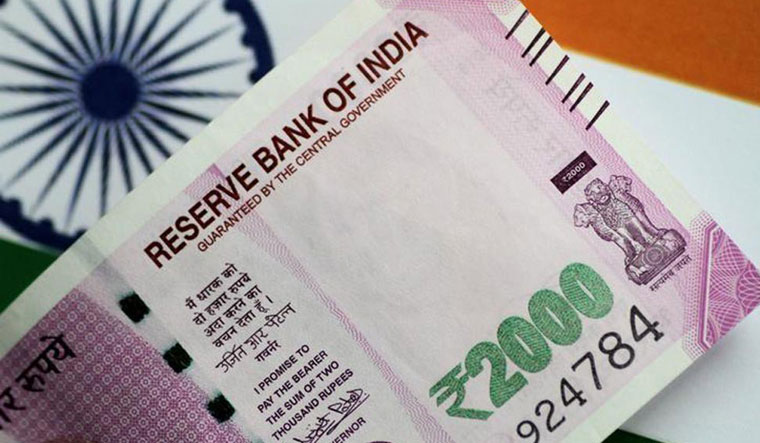In the last five years, under the Narendra Modi-led NDA government, the loan interest rates have become visibly cheaper. From RBI's policy repo rate of 8 per cent on May 2014, the interest rates have moved down to 6.25 per cent in March 2019. However, a lower interest rate regime has not yielded any greater cheer for the banking sector or for its customers.
In fact, it has been so bad that the last two years could still mark as the worst years for the centuries old Bank of Calcutta, established in 1806, or today's State Bank of India, and for most of the 21 other public-sector banks. The government, who is the majority shareholder in these banks, played its role in managing the banking crisis saga. It even went great lengths exercising its powers, to overrule and prevail over the banking regulator's advise, several times in the last five years.
It was an RBI decision, and not a government fiat, which revealed the chinks in the banking sector. Raghuram Rajan, the former RBI governor, in 2014 had already set the ball rolling for the fate of banks. RBI directed banks to come clean on their bad loans accounting and introduced other risk gradation for their loans. Strict controls were introduced by the banking regulator on large haircuts banks were agreeing to take on infrastructure projects especially the power sector.
“By the time Urjit Patel took over as the governor, the numbers had already come to RBI,” said a former deputy governor of RBI, who did not wish to be identified. Bank's bad loans ballooned 356 per cent, from Rs 2.26 trillion in 2014 to Rs 10.39 trillion on March 2018, as the banks came clean on their loan books in last two years, RBI data showed.
“The risks in the system were out in the open. The question on the table for this government was that should we (RBI) act, or not, to stop degradation of bank's asset quality. It was the government's call to act and Urjit also sought to stick to the gun,” recalled the former deputy governor. Subsequently, with a government nod, the RBI under Patel proceeded to set up a rescue fund for the banks and put banks under watchlist from lending activities, just as his predecessor Rajan had prescribed.
More recently, Prime Minister Narendra Modi and his finance ministers Arun Jaitley, and Piyush Goyal were heard taking credit for cleaning up the bank account books. It is our government which urged banks to come clean and declare the NPAs in the first place,' said Piyush Goyal, Union railways minister and former finance minister in-charge.
But the banks managed to wade out of the regulator's stick, with help from the government to restart their loaning activities. “We must take advantage of the growth signals in the economy. At a time like this, it is not right to restrain banks from doing business,” Rajeev Kumar, secretary, department of financial services, said after a meeting with RBI officials earlier this year during which he gave presentations on why banks should be allowed more fiscal space.
But, as the still rising number of bad loans reflects, all this have not helped bring down banks worries. However, a greater worry is making banks even more livid. “We had thought that going with the Insolvency and Bankruptcy Code could save the situation. We would not have to go for large haircuts and recoveries could be sooner. But, the delays in the process is a big worry now,” said Rajiv Rishi, chairman, Central Bank of India.
“Out of 9,000 cases that went to NCLT for initiation of insolvency proceedings, 4,400 cases have been disposed off, and rest of them are pending. Bulk of the cases (80-85 per cent), have been disposed off even prior to admission. More than 3,500 cases have been resolved pre-admission resulting in claims amounting to Rs 1.2 lakh crore in out of bank settlements," said M.S. Sahoo, chairman, IBBI, justifying the work done in the last three years of enacting the Insolvency and Bankruptcy Code by this government.
The RBI had directed banks to proceed with action against 12 of their largest defaulters at the NCLT to initiate the insolvency process against them. All of these had surpassed the 270 day mandate as directed under the IBC process to reach resolution. Of the 1198 bankrupt companies admitted for resolution, just 52 are being sold until February end. The liquidation process has started in 212 cases and there are still 816 cases pending for resolution.
The slow insolvency process recently favoured settlement of an unsecured creditor, Ericsson, in the Reliance Communications default whereas Anil Ambani’s much larger defaults with banks were ignored. “The insolvency process needs a breathe of fresh air and probably more strength in numbers to go after these resolutions,” said Abizer Diwanji, partner and head of EY’s Restructuring & Turnaround services in India.
For depositors, visits to banks became a desperate call during demonetisation despite large scale digitisation in banking services. The interest on bank deposits enjoyed by many pensioners and small industries shrunk by 33 per cent in the last five years. Going ahead, as signals from the government are for even lower interest rates on bank loans, deposit rates would only be allowed to fall further.



